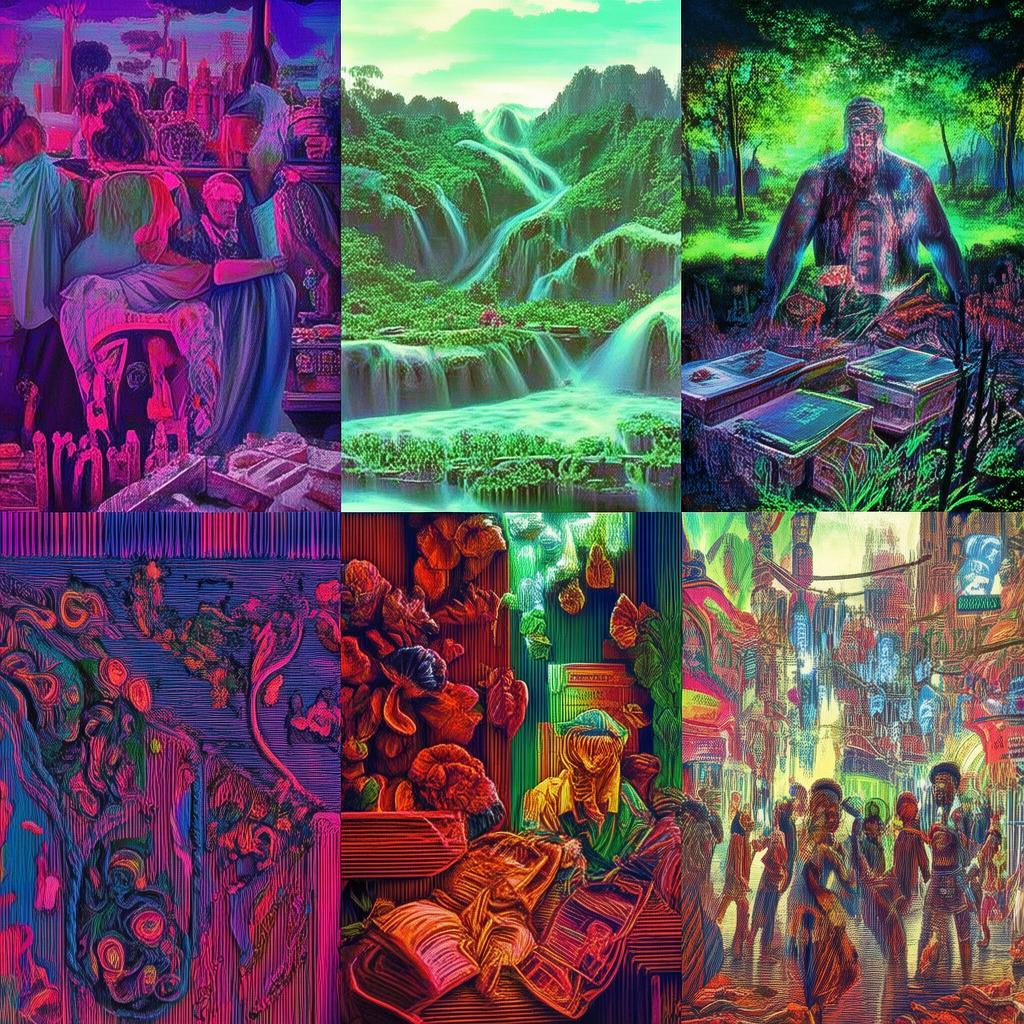Steam of Redemption: The Rebirth of Charles Dickens
In the year 1843, Charles Dickens found himself in a world unrecognizable to him. The streets were lined with towering steam engines and the air was thick with the scent of coal and iron. The Industrial Revolution had reached its zenith, and the landscape was a cacophony of hisses and clanks. It was Christmas Eve, and the city was abuzz with the usual cheer of the season, but for Dickens, it was a time of disorientation and dread.
He was standing in the middle of a bustling street, surrounded by people dressed in the garb of a bygone era. They were talking about a tale that he had written, a story of redemption and transformation. But this was no ordinary story; it was The Christmas Carol, transposed into a world where steam powered the very soul of society.
As he wandered through the crowd, a voice called out to him. "Mr. Dickens, we need your help!"
Turning, he saw a group of laborers, their faces etched with the weariness of their toil. The leader stepped forward, a man with a rough, calloused hand. "We have read your story, and we see the light of hope in it. But here, in this steam-powered world, the light is dimming. The machines have taken over, and we are left in the dark."

Dickens was taken aback. "I don't understand. How can my story help you?"
The man sighed, "Our world is a harsh one, Mr. Dickens. The masters of the machines do not care for the workers. They treat us as cogs in a vast machine, and many of us have lost hope. We need your tale of redemption to give us strength to fight for our rights."
Dickens pondered the man's words. He had always been a fighter for the rights of the poor and the underprivileged. The thought of his story being used to inspire a group of struggling workers was humbling. He knew he had to help.
"Very well," he said, "I will rewrite The Christmas Carol for this world. But first, I must understand it. Show me the conditions you live in."
The workers led him to the heart of the city, where the factories stood like monoliths, their steam vents spewing black smoke into the sky. The air was thick with the fumes, and the workers' faces were streaked with soot and grime. They showed him the sweatshops, the overcrowded tenements, and the children who worked in the factories.
Dickens was appalled. "This is not the world I knew. How did it come to this?"
The leader shook his head. "The machines have brought progress, but at a terrible cost. We are the ones who pay the price."
Determined to make a difference, Dickens began to rewrite his story. He replaced the ghosts of Christmas Past, Present, and Future with the spirits of the workers' past, present, and future. The Cratchit family became the workers, and Scrooge became the greedy factory owner. The story was no longer just about the redemption of one man; it was about the redemption of an entire class.
As he worked, the workers gathered around, their eyes filled with hope. They listened as Dickens spoke of the power of change, the importance of standing up for one's rights, and the possibility of a better future.
On Christmas Eve, the workers gathered in the factory square. The factory owner, a man named Mr. Bogle, watched from the shadows. He had heard of Dickens' plan and was determined to stop it.
As the story began, the workers listened intently. The factory owner's face grew pale as he realized the impact of the tale. The workers were moved by the story, and their resolve to fight for their rights was strengthened.
In the end, Dickens' rewritten tale became a catalyst for change. The workers banded together, and with the help of the local community, they fought for better working conditions and fair wages. The factory owner was eventually brought to justice, and the workers found a new hope for the future.
Charles Dickens returned to his own world, changed by his experience. He continued to fight for the rights of the poor and the underprivileged, inspired by the spirit of the workers he had met in the Victorian steamworks.
The story of the workers and their struggle spread far and wide, becoming a symbol of hope and resilience. The Christmas Carol, rewritten for the Victorian steamworks, became a testament to the power of literature to inspire change.
And so, on Christmas Eve, the workers celebrated their victory, their faces alight with the glow of hope. The steam-powered world had been reborn, and the light of redemption shone bright.
✨ Original Statement ✨
All articles published on this website (including but not limited to text, images, videos, and other content) are original or authorized for reposting and are protected by relevant laws. Without the explicit written permission of this website, no individual or organization may copy, modify, repost, or use the content for commercial purposes.
If you need to quote or cooperate, please contact this site for authorization. We reserve the right to pursue legal responsibility for any unauthorized use.
Hereby declared.









